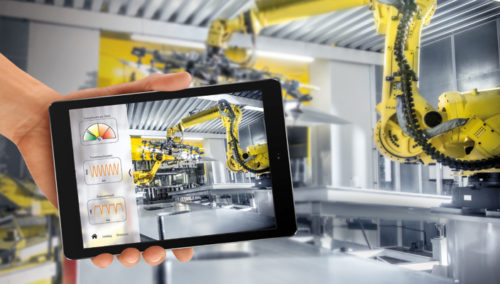Three steps to implement a successful Industry 4.0 strategy
Three steps to implement a successful Industry 4.0 strategy

Schneider Electric wants businesses to think carefully about the advantages and disadvantages of moving to industry 4.0, which swaps low intelligence computers and humans with machine learning, autonomous systems, and robotics.
At the Big Data & M2M Summit in Mississauga, Canada, Martin Stephenson, the vice president of process automation for OEM at Schneider Electric, gave three steps to avoid disaster when switching infrastructure from industry 3.0 to 4.0:
Step 1: Ensure management buy-in
Moving to industry 4.0 requires broad consensus of the advantages. Stephenson says the senior on-site management should approve of the concepts before implementation.
“A lot of the discussion in industry 4.0 is built around changing the culture, moving from automation and control towards true cloud-based services and interoperability, so you need to make sure that you have executive sponsors, and that your on-site leadership is into the principles of 4.0,” said Stephenson.
See Also: What is Industry 4.0?
Leadership are typically the people with the best knowledge of the production line and will be able to detail how industry 4.0 will impact the business better than anyone else.
It also helps to have management, who control the workers, on board with the idea of autonomizing parts of the production, which may lead to job losses. If the leadership aren’t even supportive, you may find employees even less happy with the arrangement.
Step 2: Find a clear connection between your OT and IT
We’ve seen a lot of Internet of Things (IoT) and industry 4.0 projects that don’t seem to correlate or have any advantages. Stephenson thinks that management must find clear connections between the operational technology and information technology sectors, before they invest lots of their capital trying to mesh the two together.
The IT (information technology) and OT (operational technology) departments should also be confident that this is the right approach and actively pushing towards Industry 4.0. If the OT department doesn’t integrate with the new platform, the investment may be all for nothing.
“Connect your IT people and process people in daily conversations, workshops, and workstreams, to make sure they realize that it’s a joint responsibility to help move their company forward towards industry 4.0,” said Stephenson. “Neither side can do it without support and engagement from the other.”
Step 3: Try to start small scale
Several businesses that are testing Industry 4.0 tools like automation, analytics, and big data are starting at a small scale. A small test project could be enough to figure out the advantages of adopting new technologies at scale, and perhaps show some of the issues the business may face.
Industry 4.0 is a complete overhaul of the workplace. It requires broad collaboration between all the workforce and businesses that can provide the IT expertise. Businesses attempting this move should be completely aware of all the potential shortfalls before moving ahead.
Stephenson also says that Industry 4.0 will be massively different depending on the industry. The beverage industry, for example, is heavily automated already, while mining and agriculture works similar to how it did 20 years ago.
The impact of Industry 4.0 in mining and agriculture could be huge, and businesses in these sectors should be extra careful of adopting new technology without many reference points.
The post Three steps to implement a successful Industry 4.0 strategy appeared first on ReadWrite.
(31)






